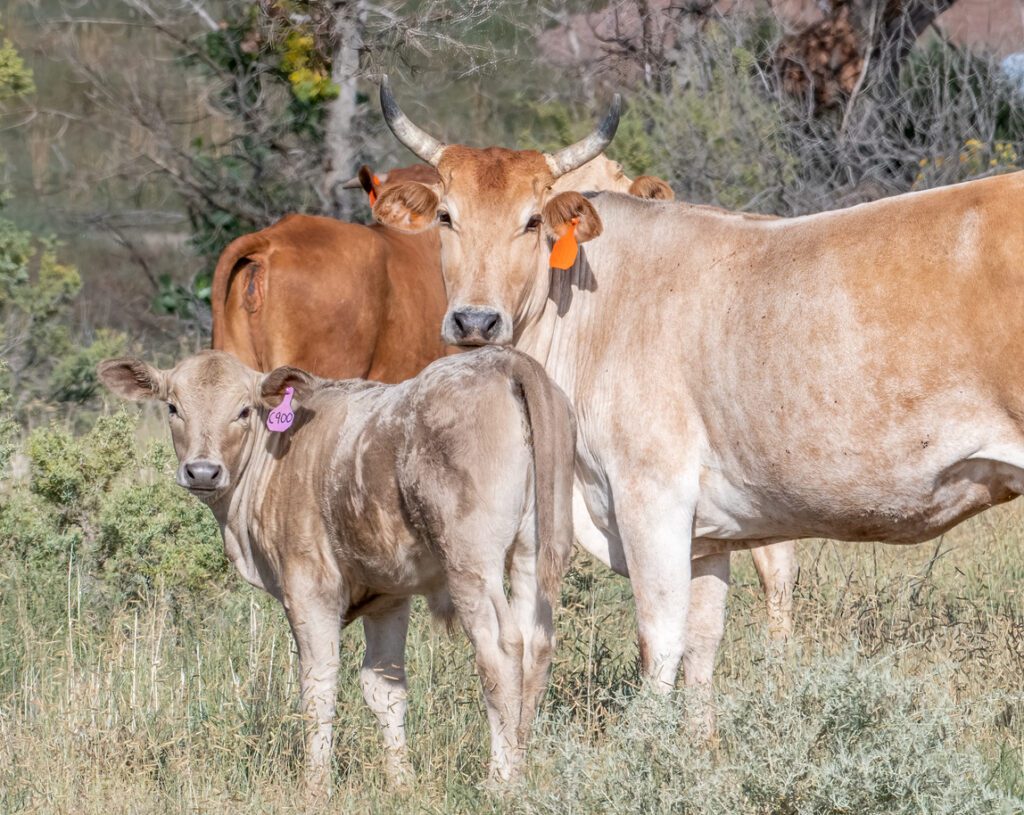Biosecurity plans in AG are common in the hog and poultry industries, but unfortunately the beef industry has been slow to adopt them. However, having a well-developed biosecurity plan is critical for beef producers to prevent the introduction of outside diseases that could devastate their herds and bottom line. Here’s a blog explaining why implementing a biosecurity plan within your Colorado farm is vital for if you’re in the beef industry.
The Story of Wilkerson Farms:
As a simple example, Wilkerson Farms, a cattle producer in Iowa, has stood out for having a biosecurity plan since they started their business eight years ago. Chad and Amy Wilkerson, drawing from their experiences with hogs, used their expertise to develop a robust biosecurity plan for their cattle operation.
Cleanliness and Vigilance:
 To begin, cleanliness plays a key role in Wilkerson Farms’ biosecurity plan. Cattle are kept in clean, freshly bedded pens, and calves have access to a small, clean creep-feeding area for convenience. The farm maintains a close relationship with their herd’s vets as well who regularly inspect the cows and calves, review effective treatment protocols, and address any other potential health issues when necessary. Daily monitoring by employees also helps deal with any health problems early, allowing for timely intervention in case of any concerns. Simply put, keen observation and obvious cleanliness is the core of a good biosecurity plan.
To begin, cleanliness plays a key role in Wilkerson Farms’ biosecurity plan. Cattle are kept in clean, freshly bedded pens, and calves have access to a small, clean creep-feeding area for convenience. The farm maintains a close relationship with their herd’s vets as well who regularly inspect the cows and calves, review effective treatment protocols, and address any other potential health issues when necessary. Daily monitoring by employees also helps deal with any health problems early, allowing for timely intervention in case of any concerns. Simply put, keen observation and obvious cleanliness is the core of a good biosecurity plan.
The Core Elements of a Biosecurity Plan:
As any well versed beef cattle specialist NCBA veterinarian would emphasize, biosecurity goes beyond just controlling what comes on and off your farm. It’s about handling and caring for animals on your farm in a way that prevents the spread of diseases. Any professional vet would suggest implementing the following elements for a successful biosecurity plan, which are also consistent with the Beef Quality Assurance (BQA) program:
- Cleaning and disinfecting facilities and equipment.
- Monitoring people and animals that have been on the property.
- Implementing a quarantine period for new animals.
- Providing a good nutrition plan.
- Handling animals in a low-stress manner.
- Investing in training protocols for farm employees.
- Maintaining a solid vaccination program.
Simple Measures for Effective Biosecurity:
 Back at the Wilkerson Farm, keeping a biosecurity plan simple yet comprehensive is key. Their farm focuses on cleanliness, ensuring that pens and offices are regularly cleaned and cleaned thoroughly. Employees also change their footwear and outerwear upon arriving and leaving the facility, while visitors are required to wear plastic boots for disease prevention too. Utilizing clean or new items for any interaction with the cattle is the best way to keep their health, and yours, superior.
Back at the Wilkerson Farm, keeping a biosecurity plan simple yet comprehensive is key. Their farm focuses on cleanliness, ensuring that pens and offices are regularly cleaned and cleaned thoroughly. Employees also change their footwear and outerwear upon arriving and leaving the facility, while visitors are required to wear plastic boots for disease prevention too. Utilizing clean or new items for any interaction with the cattle is the best way to keep their health, and yours, superior.
Lastly, the Wilkerson Farm quarantines any new cows in a incubation type facility before introducing them to the rest of the herd. Blood samples are taken and screened for any diseases to prevent potential outbreaks. Preparing for the worst and keeping the quarantine protocol for all new animals is the best way to maintain a healthy atmosphere at your beef farm. Biosecurity needs to be proactive, with producers having a plan in place before an outbreak occurs. For a great reference, be sure to check out the BQA Daily Biosecurity Plan for Disease Prevention Guide to help you create an effective biosecurity strategy for your Colorado ranch.
The beef industry must recognize the significance of biosecurity if we want to continue to prevent disease outbreaks in Colorado and across the nation. Implementing a strong biosecurity plan will not only protect the health and welfare of our animals but also safeguard this industry’s stability. Regular evaluation and improvement of a biosecurity plan will ensure producers, like yourself, are better equipped to face any challenges that may arise so you can stay profitable in producing top quality beef for our community.
If you would like assistance in creating your own beef biosecurity plan for your Colorado farm, feel free to contact us for help at any time. We’d be glad to help you curate the best strategy for your local beef farm.
This blog post is for informational purposes only and should not be considered financial, legal, or investment advice. Any information contained in this post is subject to change without notice and should not be relied upon without seeking the advice of a qualified professional. The views and opinions expressed in this post are those of the author and do not necessarily reflect the official policy or position of our Association. The author and Association are not responsible for any errors or omissions and are not liable for any losses or damages arising from the use of the information contained in this post.

